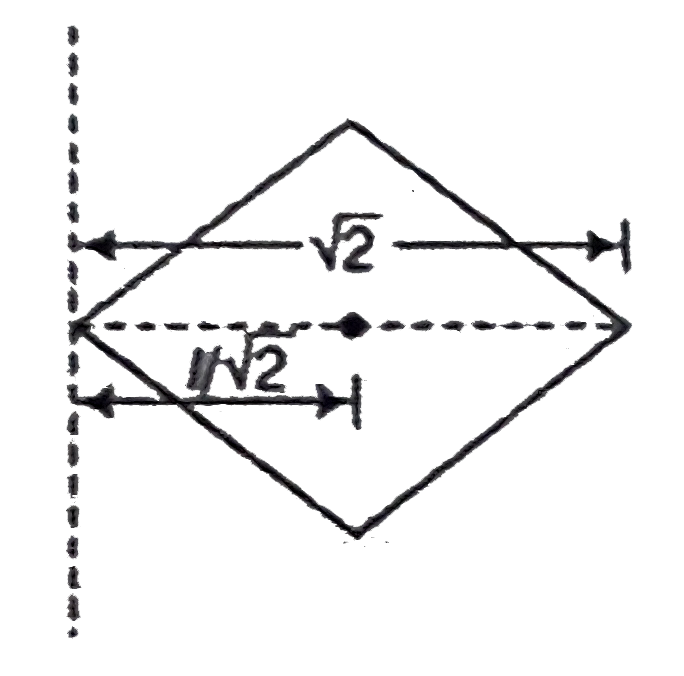If I is moment of inertia, F is force, v is velocity, E is energy and L is length then, dimension of (IFv2EL4) will be:
coefficient of viscosity
plank's constant
force constant
energy density
To find the dimensions of the expression IFv2EL4, we will break down each component into its fundamental dimensions and then substitute them into the expression.
Step 1: Determine the dimensions of each variable
1. Moment of Inertia (I):
I=mk2
where m is mass and k is the radius of gyration (length). Thus, the dimensions of I are:
(I)=(m)(k)2=ML2
2. Force (F):
F=ma=m⋅vt=m⋅LT
Therefore, the dimensions of F are:
(F)=(m)(a)=M⋅LT2=MLT−2
3. Velocity (v):
(v)=LT
4. Energy (E):
For potential energy E=mgh, where g is acceleration due to gravity:
(E)=(m)(g)(h)=M⋅LT2⋅L=ML2T−2
5. Length (L):
The dimension of length is simply:
(L)=L
Step 2: Substitute the dimensions into the expression
Now we substitute the dimensions into the expression IFv2EL4:
IFv2EL4=(ML2)(MLT−2)(LT)2(ML2T−2)(L4)
Step 3: Simplify the expression
Calculating v2:
v2=(LT)2=L2T2
Now substituting v2 into the expression:
IFv2EL4=(ML2)(MLT−2)(L2T2)(ML2T−2)(L4)
Now simplifying the numerator:
=M2L2LT−2L2T−2ML2T−2L4
=M2L5T−4ML6T−2
Step 4: Cancel out common terms
Now, cancel M and L2 from the numerator and denominator:
=ML5T−4L6T−2=M1L5−6T−4+2=ML−1T−2
Final Result
Thus, the dimensions of IFv2EL4 are:
(ML−1T−2)
I=mk2
where m is mass and k is the radius of gyration (length). Thus, the dimensions of I are:
(I)=(m)(k)2=ML2
F=ma=m⋅vt=m⋅LT
Therefore, the dimensions of F are:
(F)=(m)(a)=M⋅LT2=MLT−2
(v)=LT
For potential energy E=mgh, where g is acceleration due to gravity:
(E)=(m)(g)(h)=M⋅LT2⋅L=ML2T−2
The dimension of length is simply:
(L)=L
v2=(LT)2=L2T2
IFv2EL4=(ML2)(MLT−2)(L2T2)(ML2T−2)(L4)
=M2L2LT−2L2T−2ML2T−2L4
=M2L5T−4ML6T−2
=ML5T−4L6T−2=M1L5−6T−4+2=ML−1T−2
(ML−1T−2)
Topper's Solved these Questions
Similar Questions
Consider the equation F=a2be−bxE where F is force x is distance E is energy and a, b are constants. What are the dimensions of a and b?
View SolutionThe moment of inertia of a system of four rods each of length l and mass m about the axis shown is

View SolutionThe moment of inertia of a door of mass m, length 2l and width l about its longer side is.
View SolutionIf F is the force, v is the velocity and A is the area, considered as fundamental quantity . Find the dimension of youngs modulus.
View SolutionIf force (F), velocity (V) and time (T) are taken as fundamental units, then the dimensions of mass are
View SolutionIf force (F), velocity (V) and time (T) are taken as fundamental units, then the dimensions of mass are
View SolutionIf the energy ( E) ,velocity (v) and force (F) be taken as fundamental quantities,then the dimension of mass will be
View SolutionIf the energy ( E) ,velocity (v) and force (F) be taken as fundamental quantities,then the dimension of mass will be
View SolutionIf E = energy , G= gravitational constant, I=impulse and M=mass, then dimensions of GIM2E2 are same as that of
View SolutionIf I1 is the moment of inertia of a thin rod about an axis perpendicular to its length and passing through its centre of mass and I2 is the moment of inertia (about central axis) of the ring formed by bending the rod, then the ratio of I1 to I2 is
View Solution